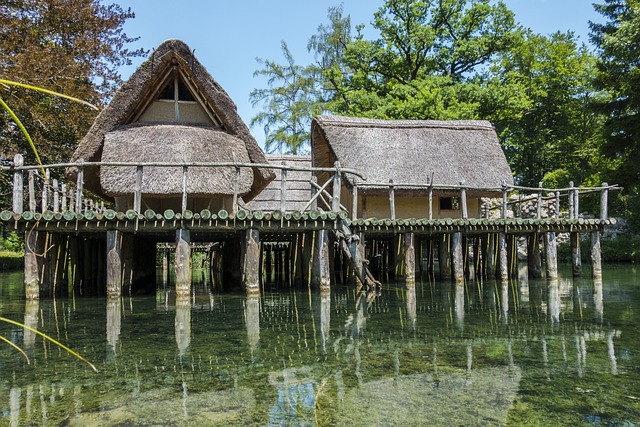
Palafitos are constructions supported by pillars over the water.
The Italian word palafitta came to Spanish as palafito . This is the name given to housing that is built on sticks or stakes in a flood-prone area, inside a lake or lagoon or even on a shore.
over the water
Palafitos are constructions whose pillars are above the water . That is why they usually develop in courses or bodies of water with little movement. In the case of the sea, the stilt houses are built on the coast.
The sticks of the stilt houses are stuck into the bottom of the body of water. The platform that allows the building to be concreted is developed on them, generally using materials such as wood and straw .
The elevation of the stilt houses is associated with the eventual water flooding that may occur. With high-rise construction, if the water rises, the home will not flood or be at risk.
It is important to mention that stilt houses are usually simple. They are often manufactured by towns with little economic development, using the materials found on the site. Currently, however, there are countries where the construction of stilt houses is intended for tourism .
History
Already in Prehistory, humans built stilt houses, according to archaeological evidence found in different places. On the European continent, for example, we can find traces of these works around the Alps and in present-day Slovenia, France, Lithuania, Latvia and Scotland, both in the vicinity of wetlands and lakes. Two of the several reasons why it is believed that our ancestors preferred this type of housing are protection against hostile people and animals that could attack them and hunt them.
Some of the stilt houses found in Europe date back to the Neolithic and have extensions that reach half a hectare. Throughout this period, as well as the Copper and Bronze Ages, these settlements were frequent both in the Alpine region and in the Podantic plain. Given the current location of some of the remains, the first to study the stilt houses tended to think that they were artificial islands, similar to the so-called crannogs (built in the waters of Ireland, Wales and Scotland during prehistory), but with the They eventually understood that subsequent floods most likely left them far from the shores, where they were actually built.
Currently, some reconstructions of houses with these characteristics can be seen in different open-air museums. It is worth mentioning that in the Alps there are raccards , which also resemble Spanish granaries (constructions for the storage and preservation of food), and which are still used as granaries today. We can see other similar examples in England and Italy.
Prehistoric stilt sites
In this context, various settlements erected in the Alpine lakes with this technique, which are part of the World Heritage Site protected by UNESCO , are known as Prehistoric Palafitic Sites of the Alps . These stilt houses are distributed between Switzerland , Italy , Germany , France , Austria and Slovenia .

It is believed that the stilt houses served as protection against attacks by animals or other humans.
Among these countries, the majority of the remains were found in Switzerland, Italy and Germany, with Slovenia being the place with the smallest number: just two stilt houses. Regarding the dates on which it is estimated that they were built, the oldest are around 5000 BC. C. and the most modern, 500 BC. c.
These are a series of settlements whose state of conservation is exceptional and, therefore, provide incalculable cultural wealth. They are essential to study the ancient agrarian societies of the place. The columns on which these stilt houses were built are known as pilotis .
